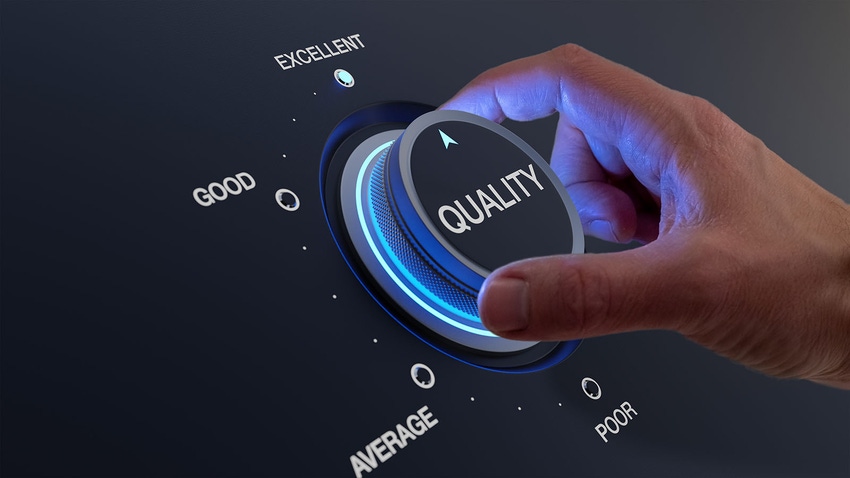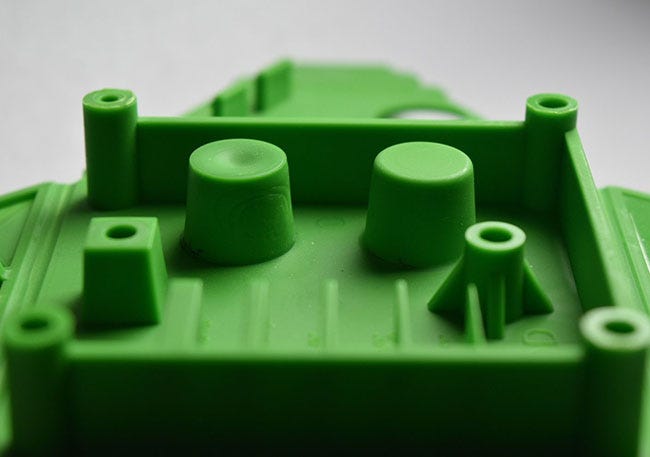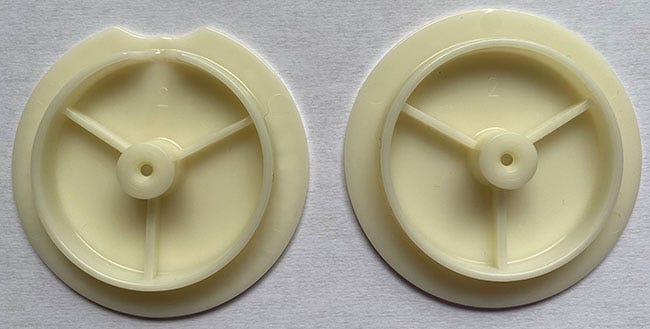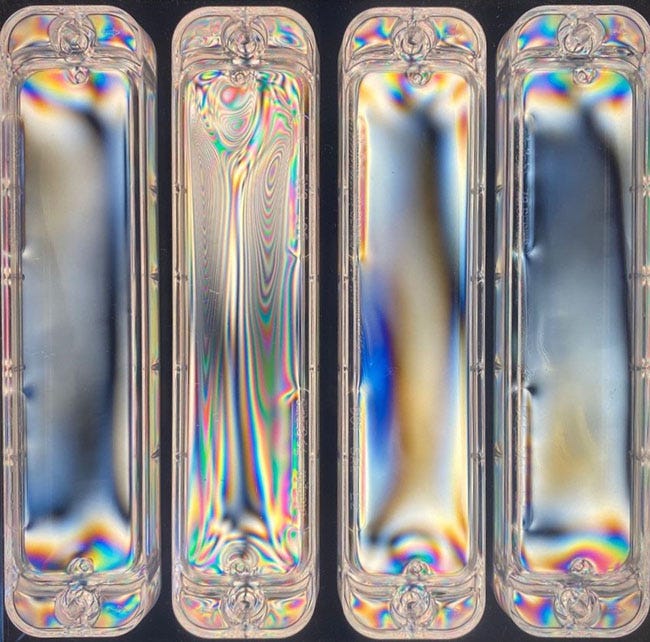How to Optimize Your Medical Injection Molding Process
To consistently mold components that meet quality control specs and reduce development hours for customers, follow these steps.
April 23, 2024

At a Glance
- An ad hoc trial-and-error process results in high scrap rates, less throughput, and inconsistent quality.
- The key to improving part consistency is to refine the parameters used to prepare, inject, and pressurize a shot.
- One of the most critical mistakes molders make is adjusting more than one variable or phase at a time.
Precision molded thermoplastic parts are used in everything from catheters and IVD cartridges to drug-delivery systems. In fact, the vast majority of medical devices include precision molded components, and few other industries require such tight tolerances and consistency. However, molding parts to meet the precise specs demanded by medical device OEMs is still very much an iterative process during the new product introduction (NPI) phase. This process often consists of doing numerous test shots with multiple iterations of machine settings. Because of this, many medical device injection process technicians assume that once they finally get to the point of producing a good part, the process they used to get there must be fine as well. Usually, that’s not the case.
All injection molders have a defined set of procedures for setting up the machine, performing test shots, and evaluating results. Nonetheless, those procedures often get brushed aside in favor of an ad hoc “troubleshooting” system. The procedures, which seemed sensible in theory but not in practice, are rarely revisited to determine why.
You may be asking yourself: If the end result is a good part, who cares about the journey to get there?
Fair question. The hidden downside of not having robust setup, operation, and tracking procedures comes down to cost and risk. During the NPI phase, the ultimate goal is to produce components that consistently meet quality control specs and reduce development hours for customers. While an ad hoc trial-and-error process can indeed produce good parts, consistency often wanes and adjustments must be made on the fly once in production. This ultimately results in higher scrap rates, less throughput, and quality inconsistency.
Injection molders can boost confidence and trust from their OEM customer by adopting the proactive mindset of a researcher (why) rather than the reactive mindset of an operator (how).
Focus on the process of making consistent components.
Plastic is a life-changing and transformational material, although it can be finicky. You might assume that a hopper of pellets is as chemically consistent as salt. That's unfortunately not the case. Resins coming from the same supplier and same location can vary by batch, and even within a batch. This is why molders who operate on a “set it and forget it” principle using narrow processing parameters eventually get a nasty surprise with components that are not consistent. After that their hands are tied on how to properly restore the parts.
In the absence of a robust process, molders also tend to spend a lot of time up front fidgeting with settings and running test cycles instead of stepping back and refining their setup and test procedures. Again, this inevitably leads to more scrap + more downtime = higher costs and missed commitments.
Define the rules and stay within the guardrails.
The key to improving part consistency is to refine and narrow the parameters used to prepare, inject, and pressurize a shot. At Freudenberg Medical, we provide operators with specific instructions during the NPI phase on which variables to change, in what order, and how much. This process was created based on 40 years of experience with medical device precision injection molding and focuses on the following process parameters:
Preparation
Shot size
Back pressure
Screw speed
Decompression
Cooling time
Etc….
Injection
Injection pressure
Fill speed
Transfer
Time
Etc.…
Pressurization
Pack or hold speed
Pack time
Pack pressure
Hold pressure
Hold time
Etc.…
No matter how small or large the medical device injection molding project we are starting, we have rules for each of these process parameters that cannot be compromised.
Medical device injection molding fill studies done the right way.
Raw materials may vary by batch, but thermoplastic polymers are quite predictable in that there are only four “levers” you can pull to manipulate its final form — temperature, pressure, flow rate, and cooling rate/time. Most molders use melt flow index (MFI) or do a rheological study to evaluate how the plastic will flow and perform during injection, but the results tend to have little correlation with part quality.
In my 40+ years working in medical device injection molding, I have observed that far too many operators spend days, weeks, or even months doing these initial tests. They make an adjustment, start a machine cycle, take samples, walk away, wait for QC feedback, and make more changes. Wasted time. Wasted resin. Inconsistent quality later. Little documentation that will aid future setups.
Beware the speed trap.
Quite often, companies set up their machines to run at maximum pressure and/or flow limits. However, usually when settings are “dialed in” at or near maximum levels, problems occur shot to shot, during the next shift, or are even discovered the next day.
We recommend a focus on flow control so high quality, repeatability, cavity balance, and a consistent flow path can be maintained during the first 95% of filling, and for a consistent pack channel during the last 5% and beyond. While some people focus on applying a specific pressure, we emphasize velocity and observe thermoplastic pressure. Ultimately you want to be measuring the output not the settings of the machine!
One thing at a time…
One of the most critical mistakes molders make is adjusting more than one variable or phase at a time. When producing full parts, many parameters can be changed to try and “fix” a problem, but it is almost impossible to know how an adjustment affected the process if you change two things at the same time! Isolating the variable in check is key.

Pressure should be adjusted to properly pack the part, not to fix flash, sticking, or sinks. Image courtesy of RJG Inc. via Freudenberg Medical.

Injection screw cushion should be minimal to reduce the amount of variable material being pushed through. Image courtesy of RJG Inc. via Freudenberg Medical.

Speed should be set to create the best quality, not satisfy an inverse rheological curve. Image courtesy of RJG Inc. via Freudenberg Medical.
We have found that by adopting this approach, it only takes about five cycles to correct metering, three to five cycles to correct pressure, and five to 10 cycles to correct the cushion in front of the injection screw. Fixing short shots should only take three to five cycles…if you are focused!
Adjust. Measure. Refine. Repeat. Remember: Only change one variable at a time and document the results, not the machine settings!
Once the process is optimized, it can be validated. The ultimate goal is to adjust other variables — fill time, melt temperature, hold time, mold temperature, cooling time — very little during validation and mostly focus on adjustments to pack and hold pressure.
Five common problems that can be minimized through better process.
Shot-to-shot inconsistency caused by a bad metering phase.
Dimensional changes due to variable viscosity or pressure losses.
Variable weld lines because the machine is running full tilt.
Excess flash due to too much pressure in the parts.
Shorts caused by a lack of pressure in the parts.
Creating a culture of consistency.
A good process is nothing but words on paper without teamwork and communication. A dedication to process must be supported from the top down. If management creates a set of best practices, but also encourages the floor to do whatever it takes to produce a good part, operators will quickly skip process and revert to a “tinkering” mindset.
It is important, however, that the procedures be revisited frequently. They are not a “set it and forget it” exercise. Communication must flow freely between management, floor supervisors and operators. Ongoing operator training is absolutely critical and procedures need to be revisited on a regular basis to ensure they reflect current best practices. It’s the best way to truly create a culture of consistent quality through a stable process.
About the Author(s)
You May Also Like




